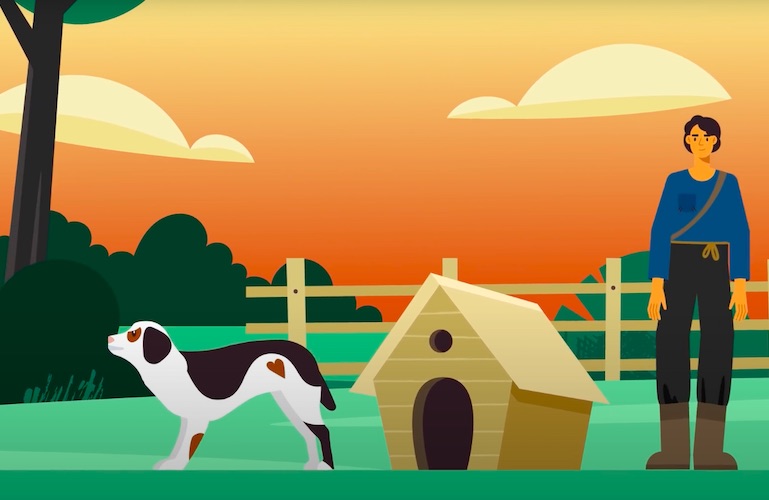Empathy
Neuropsychologist Chris Frith on mirror neurons, compassion, and how it depends on the sentiment towards the s...

In January 2016 Biological letters published an article called “Dogs recognize dog and human emotions”. We asked one of the authors, Natalia Albuquerque from the University of São Paulo and the University of Lincoln, to comment on this study.
The perception of emotional expressions is one of the most important social tools and allows animals to evaluate motivations and intentions of other individuals. Whether dogs can or cannot recognize emotions has been the subject of a warm debate for many years, especially in relation to reading human emotions. Domestic dogs are naturally social animals but one of their most interesting aspects is that they usually live in mixed species groups and dogs are indeed very good readers of human cues. In this sense, it is plausible to think it may have been adaptive to recognize the emotions of humans as well as other dogs.
We used a cross-modal preferential looking paradigm and presented 17 adult family dogs of various breeds with either human or dogs faces displaying facial expressions of different emotional valences (happy/playful versus angry/aggressive) paired with a single sound which could be a vocalization (positive or negative) of the same individual or a Brownian noise. We found that dogs looked significantly longer at the face whose expression was congruent to the vocalization, for both conspecifics (other dogs) and heterospecifics (humans). Our results show that dogs can extract and integrate bimodal sensory emotional information and this means they can form abstract mental representations of, at least, positive and negative emotional categories. The ability to recognize emotions from animals of the same species had only been previously evidenced in primates and the ability to do so across species had only been seen in humans.

Dogs and humans are not only sympatric species, they have shared essentially the same ecological niche for several thousands of years and during this evolutionary history, it is believed that dogs have developed and refined specific cognitive abilities to better interact with humans. Previous work have shown that dogs show differential responses towards different emotional expressions and that they can discriminate single modality emotional stimuli, such as facial expressions. However, dogs could be basing their responses solely on specific physic cues or simple associations and displaying learned behaviours when responding to the expressions of others, which is very different from assessing the emotional content of faces and vocalizations.
Recognition requires not only discriminating two stimuli, but also categorizing information within and across sensory modalities and integrating this information into a coherent percept. The combination of visual and acoustic cues to categorize others’ emotions facilitates the stimuli processing, enables a faster discrimination and indicates high-level embedded cognitive abilities, such as the generation and activation of underlying representations. Other studies have demonstrated dogs are able to discriminate facial expressions, we have shown show that dogs do more than that: they not only process differentiate emotional expressions, they also assess their emotional content.

Our study shows that dogs possess mental representations of emotions, which means elaborate cognitive capacities, as to recognize emotions one needs to have a system of internal categorization of emotional states. However, there are many questions still answered and these findings open the way to many new research. For example, being able to recognize emotional expressions from heterospecifics was to date known to be unique to human beings. So why do dogs possess this ability? The reason why they can assess the content of emotions of animals of other species may rely on their unique relationship with humans and their shared evolutionary history. Investigating the underlying mechanisms and the functionality of this ability may guide us to a better understanding of the dog-human relationship and even to a better understanding of the evolution of social cognition. Our group is already exploring this field and we hope to have more answers soon.

Neuropsychologist Chris Frith on mirror neurons, compassion, and how it depends on the sentiment towards the s...

New research sheds light on the evolution of complex animal groups, suggesting that they may have evolved earl...

Boston University Prof. James Collins on bacterial resistance, active mutagens, and efficacy of biocides